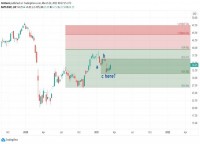|
Opalesque Industry Update - The boom in alternative investments presents something of a paradox. On one hand, money has continued to pour into alternatives over the past three years. Assets hit a record high of $7.2 trillion in 2013.1 The category has now doubled in size since 2005, with global assets under management (AUM) growing at an annualized pace of 10.7 percent—twice the rate of traditional investments (Exhibit 1). New flows into alternatives were 6 percent of total assets in 2013, dwarfing the 1 to 2 percent rate of nonalternatives. Every alternative asset grew, especially direct hedge funds, real assets, and retail alternatives sold through registered vehicles like mutual funds and exchange-traded funds (ETFs). Even private equity, where assets retreated from pre-crisis highs, has bounced back in its new fund-raising. Curiously, though, alternatives have enjoyed this growth at a time when their returns have generally lagged behind the broader market indexes. The average hedge fund, for instance, produced an 11 percent return in 2013, while the S&P 500 index soared by 30 percent. Skeptics contend that if returns stay sluggish, investor patience will wear thin, and the alternatives boom will run out of steam. However, our new research clearly indicates that the boom is far from over. In fact, it has much more room to run. In late 2013 and early 2014, we surveyed nearly 300 institutional investors managing $2.7 trillion in total assets and conducted more than 50 interviews with a cross section of investors by size and type. The vast majority of institutional investors intend to either maintain or increase their allocations to alternatives over the next three years. Interest is especially keen among large and small pension funds (though not midsize funds) and sovereign-wealth funds. Wealthy individuals are also moving rapidly into the market, as new product vehicles provide unprecedented access to retail investors. Flows from each of these four groups could grow by more than 10 percent annually over the next five years. In this article, we will first explore the factors driving growth. We then review the two big trends that should shape the strategy of any firm seeking to expand in alternatives: the growing bifurcation of the investor base and some complex shifts in competitive dynamics within the industry. Structural, not cyclical The rush into alternatives is not a momentum trade. Our interviews with institutional investors suggest that four secular factors are at work: Disillusionment with traditional asset classes and products. An increasing number of investors are now using alternatives (particularly hedge funds) as a way to dampen portfolio volatility and generate a steady stream of returns. Demand for alternative credit products has been particularly strong, driven by challenges posed to long-only strategies in the current low (but highly uncertain) rate environment. Evolution in state-of-the-art portfolio construction. Many investors seek to complement the low-cost beta achieved through index strategies with the “diversified alpha” and “exotic beta” of alternatives. Further, some of the most sophisticated institutions are beginning to abandon traditional asset-class definitions and embrace risk factor–based methodologies, a trend that repositions alternatives from a niche allocation to a central part of the portfolio (for more, see “From indexes to insights: The rise of thematic investing”). Increased focus on specific investment outcomes. The shift from relative return benchmarks to concrete outcomes tied to specific investor needs has created a new tailwind for alternatives. Alternative strategies are seen as more precise tools—for example, real estate and infrastructure can provide inflation-protected income, and hedge funds can help manage volatility. A hard-to-close gap. Some defined-benefit pension plans have persistent asset-liability gaps and are assuming unrealistic rates of return in the range of 7 to 8 percent. Many of these plan sponsors are placing their faith in higher-yielding alternatives.
(press release) |
Industry Updates
McKinsey: Disillusioned with traditional asset classes and products, investors double up alternative investments
Thursday, March 19, 2015
|
|





 RSS
RSS







